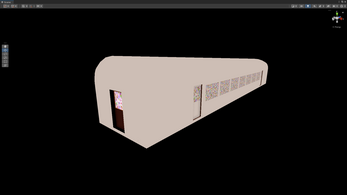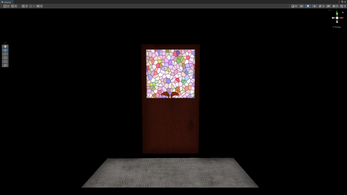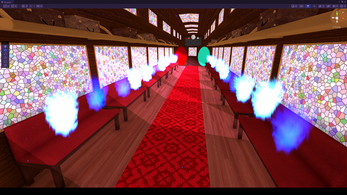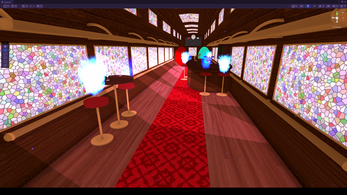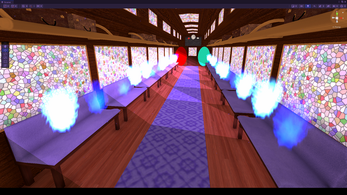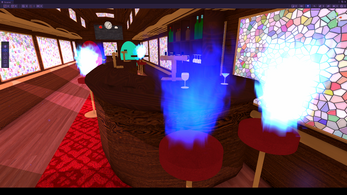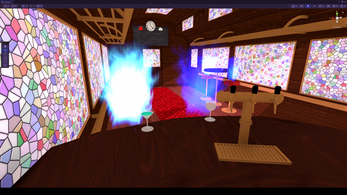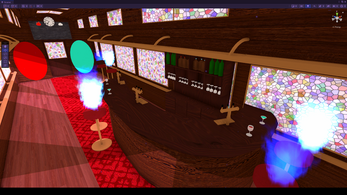Fated Endings
A downloadable project
Fated Endings was worked on in early 2024. I wanted to get some more experience in VR development so this was the main goal of this project, at least when it started out.
Fated Endings was supposed to put the Player in the role of a guide of sorts, for the departed whose souls are on a train en route to the afterlife. As it is a supernatural train, it seems to be without end, and reaching the exit only leads to a new wagon. Always. Until at last the train reaches its fated destination...
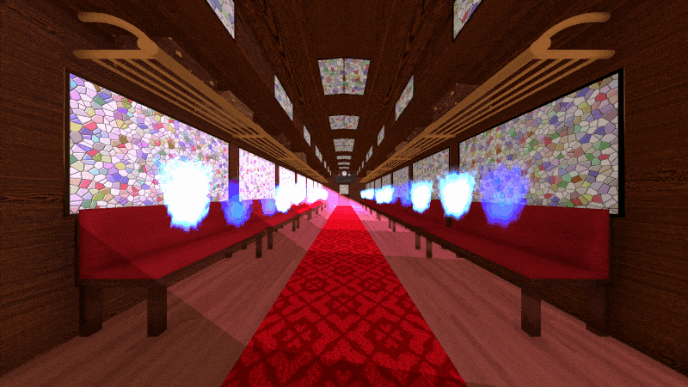
In each wagon, the Guide would tend to the souls, evaluate them, pour them a drink and determine their fate. Then, they'd decide where they belong: the good place upstairs, or the bad place waaay downstairs. It was then up to them to send them on their way through the corresponding portal and hope they'd made the right decision.
Once enough souls would have been either saved or damned, only then would the train reach its destination and the Guide would be allowed to get out, leading them to the reveal of their own fate.
From a technical standpoint, a few elements characterise Fated Endings. To have a train seem infinite, I'd decided to use a single wagon and have the Player be seamlessly teleported from one end to the other. The contents of the wagon would then be swapped automatically to make it look like a different one. Getting it to work seamlessly was an interesting challenge, and making the transition happen in the space between wagons was key, as this space sported very few details and was identical on either end of the wagon. I ended up with a rather satisfying result, although one that could have been perfected, made more precise, had I had more time to spend on the project.
The blue flames representing souls were fun to work on. They're simple particle systems but the colour and transparency, even though I'm absolutely not an expert on the subject, ended up looking pretty nice and fit the atmosphere of the project.
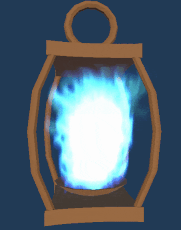
To interact with a soul, the Player was supposed to use a brass lantern they could then hold with their hand. Touching a soul would allow the Player to pick it up and carry it around. The lantern can be called with either hand, using basic game object enable/disable functions. A simple system but good enough for the intended scope.
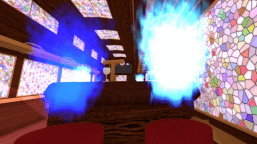
The more challenging part of the lantern system was physics related. I wanted the lantern to be dangling from the handle the Player is holding, which required rigidbodies and joints. I had trouble choosing the appropriate type of joint and setting the whole thing up so that it could work correctly, mechanically and visually, with VR hands. After some trial and error, I managed to achieve the imagined result and this was one of the most satisfying parts of the project.


For this project, I took it upon myself to model everything. Every model used was hand-made by me in Blender (aside from the actual Player hands which were part of the VR kit I used). I made this decision because none of the models I was able to find on the more popular sites really fit the needs of the project. They don't look fantastic, I'm still a beginner when it comes to 3D modelling, but it was good practice and I'm actually better for it thanks to this.
It has to be said though, that in regards to the project itself, this decision was a mistake, for a couple of reasons. As I'm still a beginner, modelling everything took me a ridiculous amount of time, compared to what a more experienced person would have needed and to what the project called for. This time could have been spent on game design and coding, which would have definitely benefitted the project. All in all, I probably spent more time on modelling than anything else, and this was absolutely not the project's goal. Lesson learned.
The biggest challenge though was the VR aspect of it all. I'm currently working on a rather obsolete desktop computer, with an obsolete VR headset (Oculus Quest 1st gen), which make things this much more difficult. My computer can barely run anything in VR and my headset doesn't work as well as it used to when I first got it, to the point that simply running the game in-editor just to test anything at all often took several minutes and wouldn't even work every time.
After a while, I realised that working on the project wasn't worth it anymore. I'd spent too much time modelling. The project lacked concrete direction. My development environment was working against me. I came to the conclusion that my time would be better spent on a new project and that it'd be better for me to set it aside.
I'm not chalking it up as a complete loss though. I learned that optimisation is even more important in VR development and that using proper equipment is a must. I practiced modelling using Blender. I had fun for a while. I still learned things.
